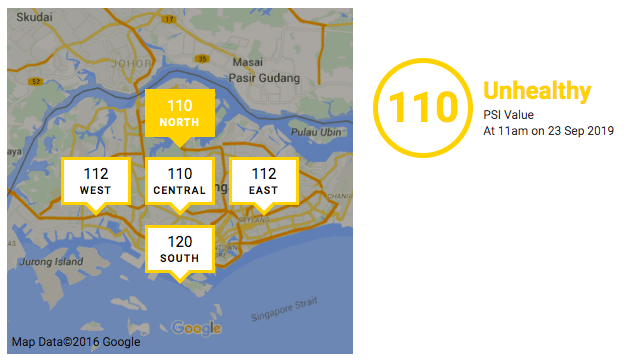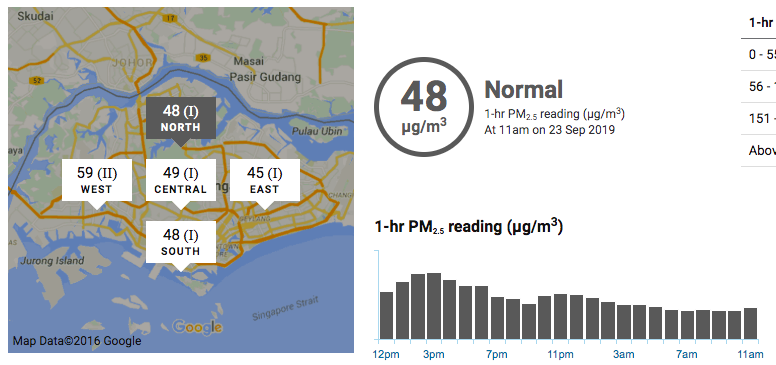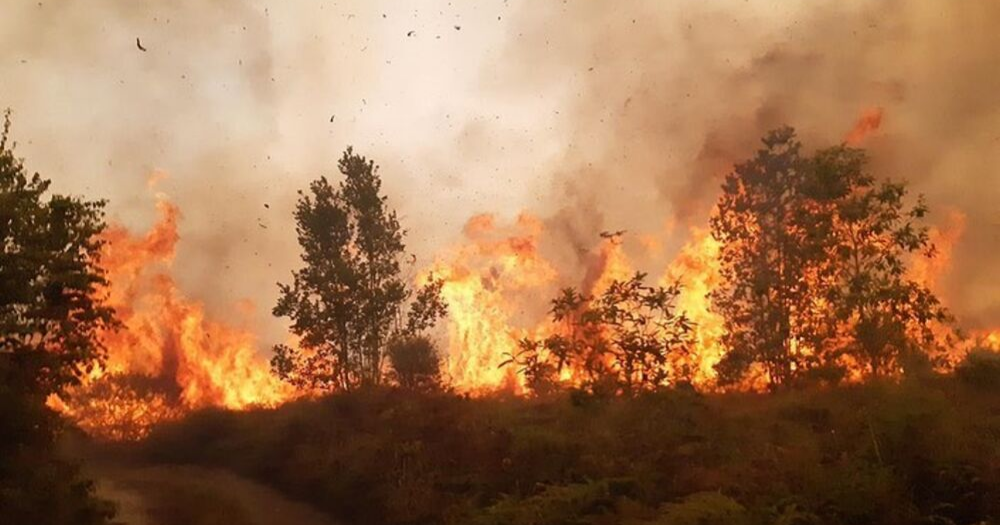Singapore experienced a brief respite from the haze the previous weeks, as one-hour PM2.5 levels dropped back to normal levels.
However, it seems that conditions worsened again over the weekend, as PM2.5 levels rose to 'elevated' levels slightly above 100 on Sep. 22, 2019.
https://mothership.sg/2019/09/haze-singapore-september-22-2019/?fbclid=IwAR2y9uqOx02UTORoRF8IVO5IULkNgfpFN5XZcz5HSXzXAo7ckVMuHmQIPo0
Here's some good news though: the National Environment Agency (NEA) has forecasted that the haze situation could potentially ease up in the coming days.
Rain showers expected over Sumatra and Kalimantan
On Sep. 22, NEA posted an update to Facebook stating that the air quality in Singapore had deteriorated slightly.
This was due to smoke blown in from Kalimantan by prevailing winds from the southeast.
Yesterday, 474 hotspots were detected in Kalimantan, while 246 were detected in Sumatra. Moderate to dense smoke haze continued to emanate from these persistent hotspots.
On Sep. 23, the prevailing winds are expected to shift, and instead blow from the east-northeast or east-southeast.
This change will likely bring in some showers of rain over the region.
The increase in showers in the coming days could potentially help improve and douse hotspots in Sumatra and Kalimantan.
Nevertheless, hotspots in some parts of these regions are still expected to persist.
PM2.5 levels may increase on Sep. 23
The current 24-hour PSI remains at 110 in the Unhealthy range, although the PM2.5 is in the Normal range (Band I) at 48.
 Screenshot from NEA
Screenshot from NEA
 Screenshot from NEA
Screenshot from NEA
However, NEA forecasts that the PM2.5 will increase to Elevated levels (Band II) and may return to Normal levels on Sep. 24.
Meanwhile, the PSI is predicted to vary between the high end of the Moderate range and the low end of the Unhealthy range, or around 100.
It may increase to the mid-section of the Unhealthy range if denser haze from the surrounding regions is blown in.
You can read NEA's full update here.
Top photo from @aio_tanoto / IGIf you like what you read, follow us on Facebook, Instagram, Twitter and Telegram to get the latest updates.
